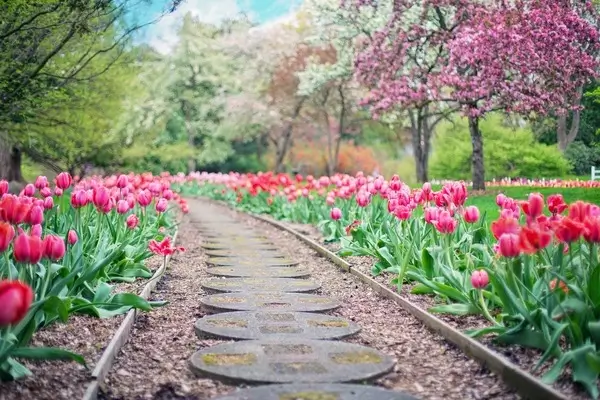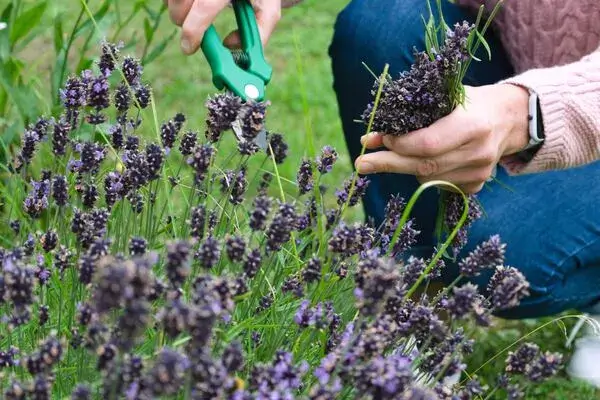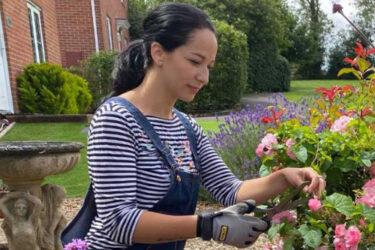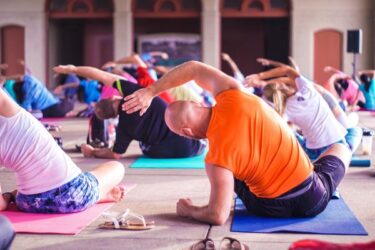Estimated reading time: 3 minutes

Gardening activities help us stay active and enjoy all the benefits of the outdoors. But many of us experience joint pain after gardening. Find out why this happens and how to reduce your aches and pains.
National Gardening Week
With National Gardening Week approaching and Chelsea Flower Show at the end of the month, we have asked our Physiotherapists to give some tips on how to manage joint issues whilst enjoying your potting, planting, and pruning.
This year, environmentalism is the overarching theme with designers and horticulturalists encouraged to showcase sustainability. If you’re looking at rising to the challenge but are wondering how it can be done with less impact on your joints, or if you’ve had hip replacement surgery, read on for our advice on gardening with joint pain.
Why do my joints hurt after gardening?
Struggling after a day spent in the garden? Rest assured, you’re not alone. The neck, back, knees, and shoulders are the areas of the body most susceptible to pain following a green-fingered session. This is because of the postures and positions of gardening. Stooping over a spade, bending, kneeling, and lifting pots and plants can all put strain and pressure on your joints. In turn, this can lead to inflammation, pain, and general exhaustion when you put your feet up afterwards.
Why do my knees hurt after gardening?
Gardeners’ knees take a lot of the strains of a day spent outdoors because of excessive kneeling. Unless you’re digging or pruning hedges, a lot of the time spent in the garden is also time spent on your knees, tending to plants.
Is gardening bad for arthritis?
Gardening isn’t necessarily bad for people with arthritis as you can do as little or as much as you want (usually at your own pace too!). If you’ve got a green-fingered project planned, remember to take it easy and do what you’re comfortable with.
How to reduce joint pain after gardening
Do you often find you have aching joints after gardening? Follow these expert tips to reduce aches and pains, prevent injuries and make working in the garden enjoyable.
Be mindful of your back
Many of us know that lifting can be one of the worst offenders in the garden so it is essential to get the technique right. Our Physiotherapists advise:
- Have a stretch before starting out in the garden
- Always bend at your knees
- Use your legs to lift, not your back
- Maintain good posture and establish a good base for support, with feet slightly apart
- Look out for hazards around you
- Take care when twisting
- When lifting heavy items, such as soil or gardening tools, always keep the weight close to your body.
Protect your hips and knees

There are ways in which we can protect our joints from injury and avoid making joint pain worse. Here are 10 top tips from our Physiotherapists:
- Use raised planters or flower beds, this will reduce the stress on your knees as you won’t have to bend as low to the ground
- Use a stool where you can, it can help if you have trouble balancing
- Garden scooters, mini wheelbarrows and other garden mobiles can really help when lifting or carrying heavy items like compost bags
- Use long handled tools were possible, like long-handed trowels. A water lance can extend your hose pipe to make watering hanging baskets or far out borders easier without over stretching
- Use knee pads on your knees when kneeling, they will help guard your joints when you are pulling out weeds in the ground
- Use kneelers with handles, to help get up and down safely
- Wear a knee brace if appropriate
- Wear good shoes, trainers or footwear which has good grip can help with balance on uneven terrain, and arch support will help for comfort
- Change positions frequently! Gardening keeps you busy but remember to take a break, have a cuppa and don’t be in one position for too long as you may get repetitive strain injury
- Ask for help if you need it rather than take risks. If you are in pain then stop. Speak to your medical professional about gardening safely after injury or joint replacement surgery.
Strengthen your core
You can help yourself when it comes to protecting your joints and back, and that is by taking part in some muscle strengthening exercises. This can be done at home, in a group or with your physio, but should always be performed under supervision if you are recovering from injury or surgery.
Strengthening exercises are so easy to do and they will keep you mobile and flexible, ready for shovelling, bending and squatting, all part of the gardening fun. Why not download our Pocket Physio App and try out some core exercises for pre and post-joint replacement?
Gardening safe
Always take advice from your physio or surgeon if you have had a joint replacement or joint surgery. It can take 1-2 years to be back to full strength after a joint replacement so it is essential you follow a plan with them, to get you gardening safe for the future.
Enjoy the benefits of gardening without the pain! Read more about gardening after hip replacement surgery or visit our treatments page to learn more about treating osteoarthritis.





